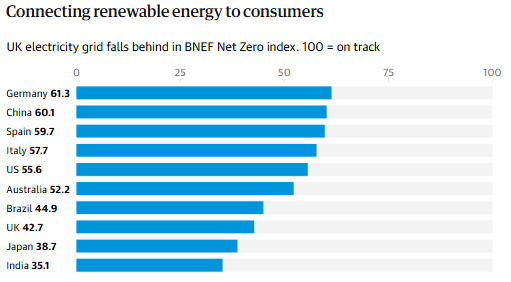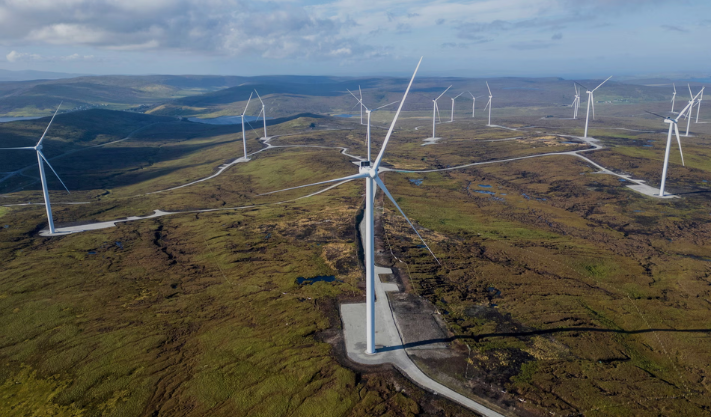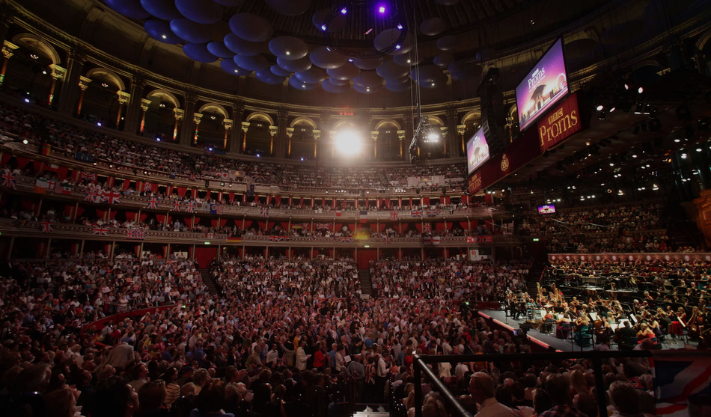The UK needs to catch up in the global competition to update its electricity grids
A report has found that for every £1 spent on renewable energy projects, only 25p was used to connect them to the grid.
The UK is falling behind in updating the world’s power grids. It is spending four times more on renewable energy projects than on the electricity cables needed to connect them to the grid and homes, according to a new report.
For every pound spent on renewables, the UK spends only 25p on cables and power lines, the report by Bloomberg NEF says. The UK ranks eighth in a list of the world’s 10 biggest energy markets.
The UK is behind countries like Germany, Spain, and Italy in building the electricity grids needed for a growing number of projects. It is also trailing China, the US, Australia, and Brazil, but is ahead of India and Japan.

A report says that to make the global electricity grid ready for a net-zero future, we might need to spend $21.4 trillion to install 152 million kilometers of new cables. This is enough to reach from Earth to the Sun.
This report was published shortly after it was revealed that the UK has already spent around £1 billion this year to pay for wind turbines to be switched off during windy weather. This is partly because the grid doesn’t have enough infrastructure to move electricity from where it is made to areas that need it most.
The report was commissioned by ScottishPower, a company that invests in renewable energy and power grids, and also supplies gas and electricity to customers. It points out that low investment and slow connections of wind and solar power to the grid are reasons why the UK ranks low in global energy rankings.
Keith Anderson, the CEO of ScottishPower, said that the UK’s fast growth in renewable energy has caused problems for the grid, as it wasn’t prepared for the rapid increase. “The grid is struggling,” he said. “We need to catch up. For every pound we invest in renewable energy, we should also spend at least £1 on the grid. We need to put more money into improving the grid and change how we connect new energy sources. The government and regulators understand what needs to be done.”
Britain’s electricity system is managed by the National Energy System Operator (Neso), a government-owned company that was once part of the National Grid. National Grid still owns and runs most of the UK’s high-voltage transmission lines, along with Scottish Power and SSE, which operate some smaller, regional networks.
Lawrence Slade, CEO of the Energy Networks Association, which represents UK electricity network operators, said that the government’s planning and approval process is the main obstacle to upgrading the energy grid.
It can take up to ten years to get approval and build a new transmission line, with 70% of that time spent on planning. That’s why we were encouraged by the prime minister’s statement this week about speeding up planning for important economic projects, he said.
A spokesperson for Ofgem, the energy regulator, said that the government’s goal of clean power by 2030 will require a fast expansion of electricity grids, something not seen in decades, while keeping costs low for customers. They promised to remove unnecessary rules to help attract the investment needed for clean energy.
A government spokesperson said: “We agree that the planning system needs to change to reach clean power by 2030 – and we are already working on that. We will collaborate with industry to improve Britain’s outdated infrastructure and get renewable energy onto the grid.”
The spokesperson also mentioned that the government would announce details of “important planning reforms” to help the industry with this major upgrade to the country’s energy infrastructure.
Published: 9th December 2024
Also Read:
UK water safety at risk as testing labs close post-Brexit
UK Weather: 80mph winds, amber warning in effect
The World of British Sports: Inside England’s Iconic Games






















